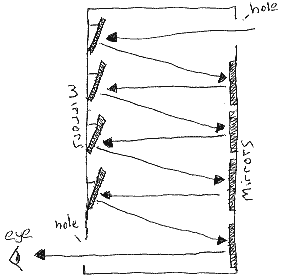Periscopes
This task is about how light works through a periscope.

Draw a labelled diagram in the box below to show how the boy is able to see over the heads of the crowd using this box with mirrors. Your drawing will need to show:
- the mirrors, (and angle they should be at),
- the path the light takes, and
- the direction of the light rays.





